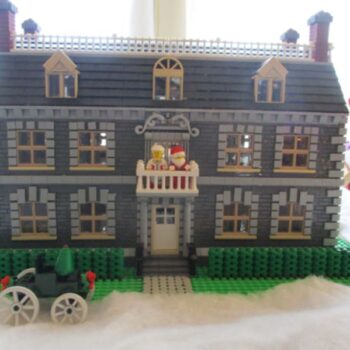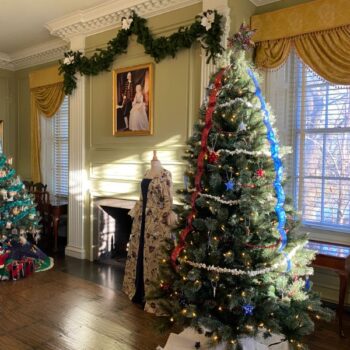The Ticonderoga Hancock House was constructed in 1925, and opened to the public in 1926. The museum is a representation of the 1737 colonial mansion of American Patriot John Hancock, which stood in Boston.
Hancock was a well-recognized signer of the Declaration of Independence, second president of the Continental Congress and served as Governor of Massachusetts following the Revolution. The Boston home was a center of activities during the American Revolution, visited by many of the prominent figures of the day. Sadly, the home was demolished in 1863.
The museum House was the gift of industrialist and philanthropist Horace A. Moses, born in Ticonderoga in 1863. Moses chose the building design to represent the Hancock House because the original home was an outstanding example of Georgian architecture.
Prior to the demolition of the Hancock mansion in Boston, measured drawings were created by American architect and builder John Hubbard Sturgis. Much of the design of the Ticonderoga Hancock House is based on these drawings, making the building much more authentic. Many details of the original home can be found throughout the museum, including the exterior Weymouth granite block construction. Not only was this exact granite found in the original home, but it has allowed the building to be largely fireproof.
The Hancock House Museum was originally under the management of the New York State Historical Association. After that group’s relocation to Cooperstown, New York, the building went through a series of tenants until 1975, when the Ticonderoga Historical Society assumed stewardship of the building and its collections.
Founded in 1897 and chartered by the New York State Board of Regents in 1909, The Lower Adirondack Regional Center for History (LARCH), formerly known as the Ticonderoga Historical Society has, through thoughtful management and a proactive board of trustees, grown the Hancock House to become the largest regional museum within a 40-mile radius. LARCH has established itself as a community partner and continues to present timely and meaningful programs and exhibits.
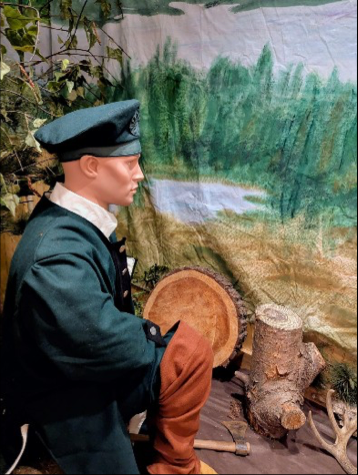






























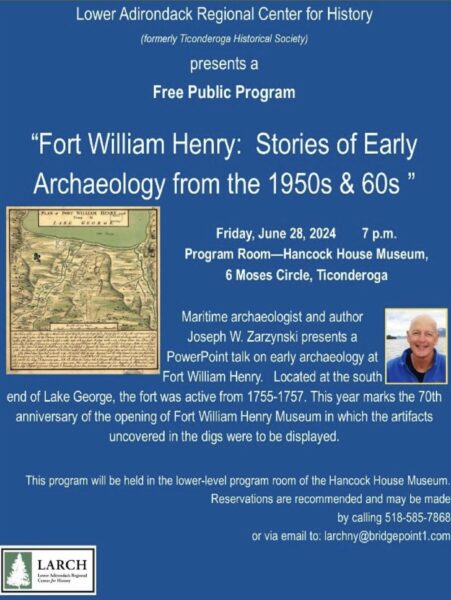




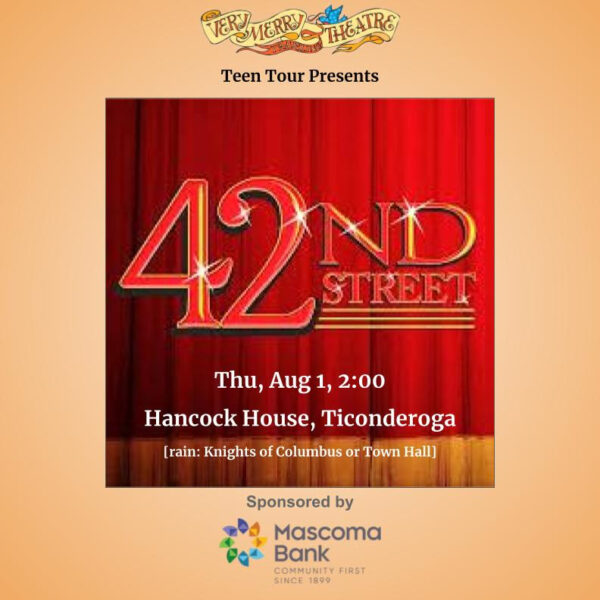

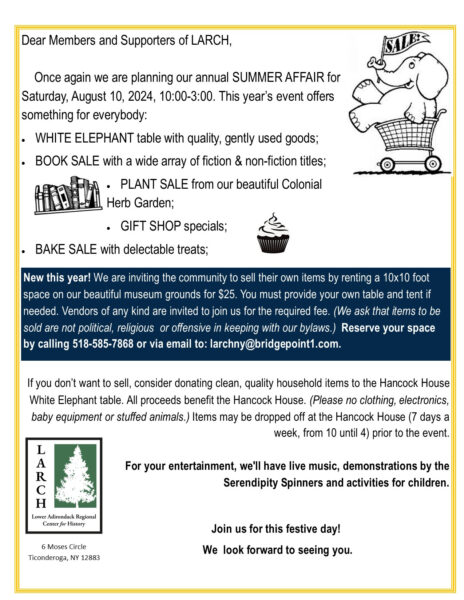





 Some of the resources found in the Hancock House library include:
Some of the resources found in the Hancock House library include:




